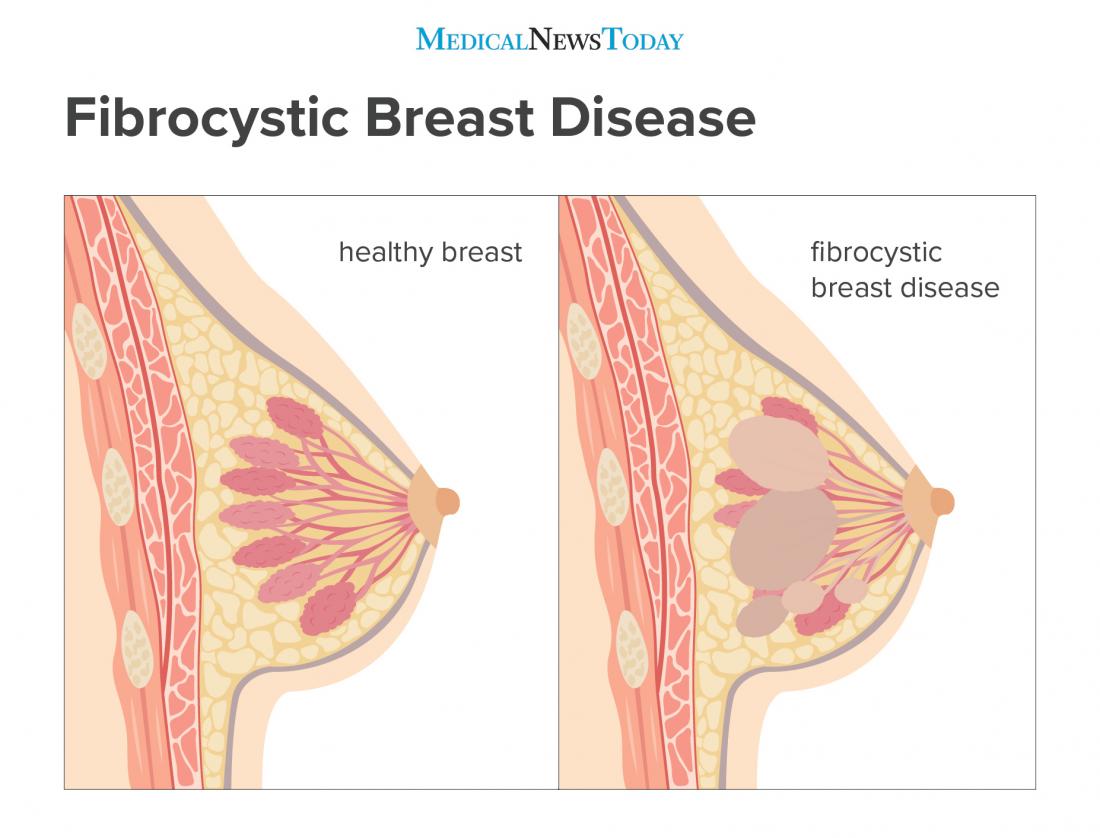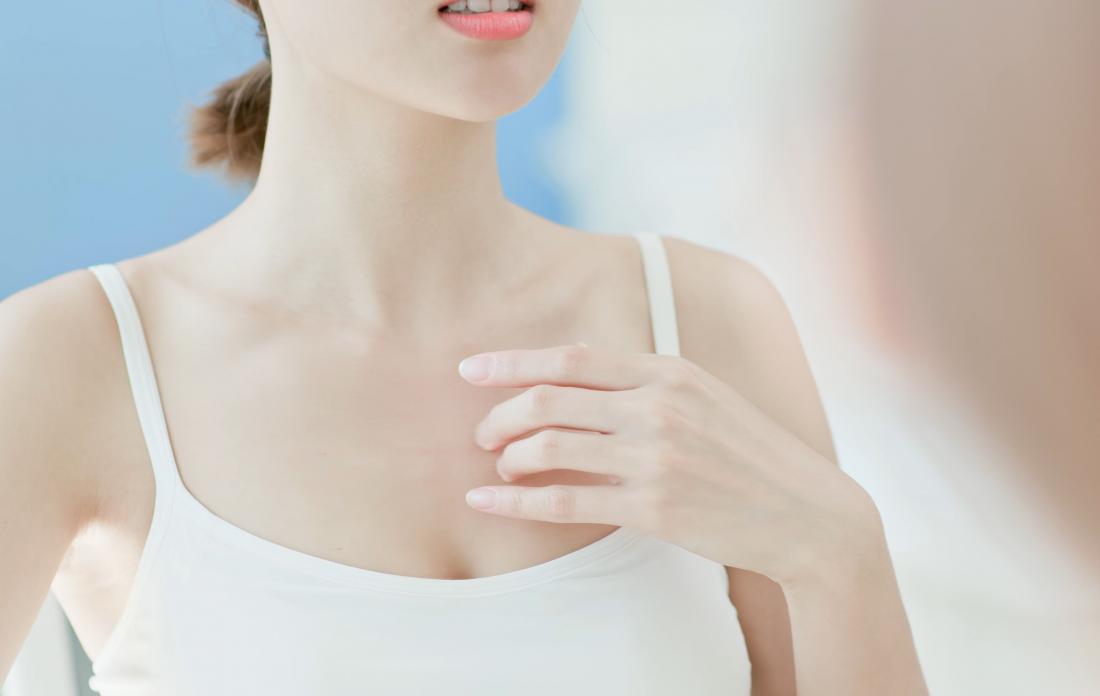What is fibrocystic breast disease?
Fibrocystic breast disease is very common. Some experts estimate that about 50 percent of women ages 20–50 in the United States experience fibrocystic breast changes at some point.
In this article, learn about the symptoms and causes of fibrocystic breast disease, as well as how to get relief and when to see a doctor.
Causes
Medical experts have yet to fully understand the cause of fibrocystic breast disease, but there appears to be a strong association between hormones and breast changes.
Breast tissue responds to fluctuating levels of hormones, especially estrogen.
Changes in the breasts may include:
- an overgrowth of cells that line the milk ducts
- an increase in fibrous tissue
- the formation of cysts
People who develop fibrocystic changes may be more sensitive to hormonal fluctuations during the menstrual cycle. It is common for symptoms to become more bothersome right before or during a menstrual period.
Fibrocystic breast disease tends to affect people who are premenopausal and between the ages of 20 and 50.
Some people who take estrogen replacement therapy after menopause also develop fibrocystic changes.

Image credit: Stephen Kelly, 2018
Symptoms
Symptoms of fibrocystic breast disease may come and go during the menstrual cycle. Symptoms may also vary from month to month.
The changes typically occur in both breasts, but lumps and pain may be worse in one breast than the other.
Although it can vary, the pain or discomfort is usually located in the undersides of the breasts or in the upper areas, when the majority of milk glands are.
Typical symptoms include:
- breasts that feel lumpy or have rope-like bumps
- tenderness
- pain under the armpit
- swelling
- breasts that feel heavy
While lumpy breasts and discomfort are common in people with fibrocystic breast disease, it is essential to know when to see a doctor.
If a person develops new lumps or skin puckering, or if the pain continues to get worse, it is best to speak to a doctor.
Is it linked to cancer?
According to the American Cancer Society, having fibrocystic breast disease does not increase a person’s chances of developing breast cancer. There is no known association between the two conditions.
Fibrocystic breast disease may make it difficult to differentiate between a new breast lump and fibrocystic changes.
Doing monthly breast self-exams and following a doctor’s recommendations for clinical exams and mammograms can help catch any harmful changes early.
Diagnosis

Symptoms of fibrocystic breast disease can include tenderness and swelling.
A doctor may diagnose fibrocystic breast disease after a clinical breast exam and a review of symptoms.
During the exam, the doctor feels each breast to check for lumps or abnormal areas. Fibrocystic breast changes tend to feel different from the lumps associated with breast cancer.
Usually, fibrocystic changes involve lumps that are not attached to the surrounding tissue. The lumps are typically moveable when a doctor palpates them.
Sometimes, a lump may feel firmer than usual, or a doctor may have other concerns. Performing a mammogram or breast ultrasound can help them make a diagnosis.
These imaging tests reveal more detail about the breast tissue and any cysts, such as whether a cyst is fluid-filled or solid. If a cyst is found to be both solid and fluid filled, a biopsy can help rule out cancer.
Treatment
People who experience mild pain from fibrocystic breast disease may opt for no treatment.
In other instances, the following treatments can help:
Medication
Doctors may recommend various medications for fibrocystic breast disease. Over-the-counter pain medications, such as ibuprofen or acetaminophen, may decrease discomfort.
Research including 23 studies and 2,100 participants analyzed the effectiveness of medications for breast pain. Among the treatments were topical diclofenac gel, a nonsteroidal anti-inflammatory drug. The results indicated that the gel decreased pain.
Heat
Applying a warm compress can help ease pain in the breasts. Be sure not to make it too hot to avoid burning the skin.
Hormones
Hormone therapy may balance levels and help reduce breast pain. A doctor may recommend prescription oral contraceptives containing synthetic estrogen, progesterone, or both.
One study also looked at the use of progesterone gel. The study included 50 female participants with fibrocystic breast disease.
An ultrasound measured the size and number of cysts before the start of therapy and during the study. The number and size of cysts decreased during progesterone gel treatment, and participants who received it reported a reduction in pain.
Supplements
Some supplements may help decrease pain associated with fibrocystic breast disease.
One study included 94 participants with breast discomfort due to fibrocystic changes. They were divided into three groups.
One group took 1,000 milligrams (mg) of evening primrose oil twice daily. The second group took 50 mg of vitamin B6 twice daily, and the third group received a placebo. The participants took the pills for 6 months.
The results indicated that those who took evening primrose oil or vitamin B6 reported a decrease in pain severity at 1, 2, and 3 months of treatment.
There was no reported difference in pain relief between the two supplements, which indicates that they may be equally effective.
Wear a supportive bra
Although a supportive bra cannot treat the fibrosis tissue, it can decrease discomfort. A properly fitted bra should provide support without being too tight.
People who are unsure about the best bra size and type may consider seeing a bra-fitting specialist.
Outlook
The outlook for people with fibrocystic breast disease is good. Some people do not experience bothersome symptoms, and invasive treatment is usually unnecessary.
While doctors do not know the exact cause, hormones are a major factor in breast changes.
Trying a combination of home remedies, such as heating pads, pain medications, and wearing a supportive bra, can help people get relief.
The symptoms of fibrocystic breast disease usually ease after menopause.





Comments are closed.